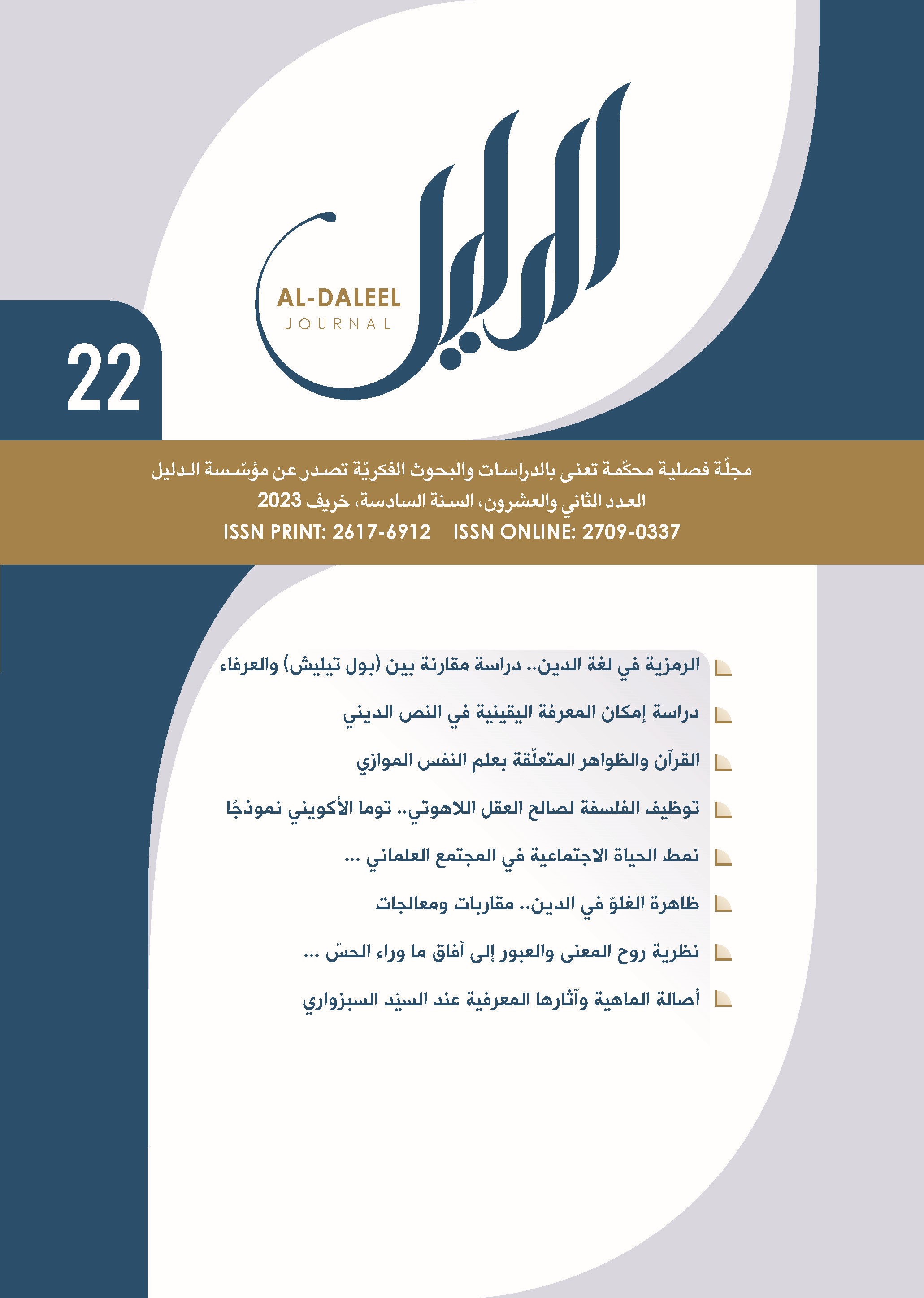Abstract
The study examines one of the most important approaches to the language of religion, namely the approach that considers this kind of language to be symbolic. Here, we discuss two theories in this study: the symbolism adopted by the Christian theologian Paul Tillich as a general theory of the language of religion, and the symbolism of the Sufis and Gnostics. However, we have identified several structural and methodological problems in both theories, such as the generalization of Tillichs symbolism to most of the sacred texts and considering them as unreal, and the reduction of religious issues to symbolic expressions intended to refer to the ultimate concern, which cannot be scientifically and historically criticized. As for the symbolism of the Sufis and Gnostics, although it differs significantly from Tillichs theory by acknowledging the cognitive and realistic nature of religious issues, it also suffers from explicit violations of the literal meanings of religious texts, and it relies on unreliable revelations (mukashafat) and other problems.Hence, we have tried in this study to review the theoretical foundations on which these two theories rely, their applied examples, and the comparison between them according to the descriptive approach in reviewing the theories and their applications, and the analytical approach in evaluation and criticism.
Keywords
Gnostic interpretation
Gnosticism
Paul Tillich
Sufism
Symbol
symbolism
the language of religion
the language of the Qur'an
Abstract
\"تناول البحث أحد الاتّجاهات المهمّة في تصوير لغة الدين، وهو الاتّجاه القائم على اعتبارها رمزيةً، وقد أوردنا فيه نظريتين هما: الرمزية التي تبنّاها اللاهوتي المسيحي بول تيليش (Paul Tillich) بوصفها نظريةً عامّةً في لغة الدين، والرمزية لدى الصوفية والعرفاء. وانتهينا إلى وجود عدّة إشكاليات مبنائية ومنهجية في هاتين النظريتين، كتعميم رمزية تيليش على أغلب بيانات الكتب المقدّسة، واعتبارها غير حقيقية، وتفريغ القضايا الدينية من بُعدها المعرفي والواقعي من خلال اعتبار أغلب ما عرضته بياناتٍ رمزيةً يُراد منها الإشارة إلى \"\"الهمّ الأقصى\"\"، ولا يُمكن نقدها علميًّا وتاريخيًّا. أمّا رمزية الصوفية والعرفاء، فهي وإن اختلفت عمّا ذكره تيليش بفارق محوري، وهو تسليمها بمعرفية القضايا الدينية وواقعيّتها، إلّا أنّها تُعاني من بعض المخالفات الصريحة لظواهر النصوص الدينية، والاعتماد على المكاشفات غير المعتبرة، وإشكالات أخرى.
من هنا حاولنا في هذا البحث أن نستعرض الأسس النظرية التي اعتمدت عليها هاتان النظريتان، والنماذج التطبيقية لهما، والمقارنة بينهما وفق المنهج الوصفي في استعراض النظريات وتطبيقاتها، والمنهج التحليلي في التقييم والنقد.
من هنا حاولنا في هذا البحث أن نستعرض الأسس النظرية التي اعتمدت عليها هاتان النظريتان، والنماذج التطبيقية لهما، والمقارنة بينهما وفق المنهج الوصفي في استعراض النظريات وتطبيقاتها، والمنهج التحليلي في التقييم والنقد.
Keywords
التصوف
التفسير العرفاني
الرمز
الرمزية
العرفان
بول تيليش
لغة الدين
لغة القرآن
